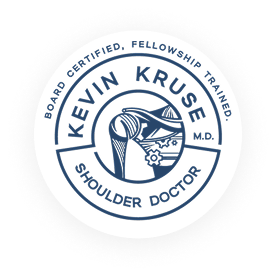Subacromial decompression is one of several surgical procedures performed to address shoulder pain and dysfunction. Each type of shoulder surgery serves a unique purpose, depending on the specific condition being treated. For patients deciding between treatment options, it’s essential to understand how subacromial decompression compares to other shoulder surgeries, such as rotator cuff repair and general shoulder arthroscopy.
This article provides an in-depth comparison of subacromial decompression and other common shoulder surgeries, focusing on indications, techniques, recovery times, and expected outcomes.
Overview of Subacromial Decompression
Subacromial decompression, also known as acromioplasty, is performed to alleviate shoulder impingement. This condition occurs when the rotator cuff tendons or subacromial bursa are compressed under the acromion bone.
- Goal: Increase the subacromial space by reshaping or removing part of the acromion, alleviating pressure on tendons and reducing pain.
- Commonly Treated Conditions:
- Shoulder impingement syndrome
- Subacromial bursitis
- Early rotator cuff tendinopathy
Key Advantages:
- Minimally invasive (usually arthroscopic)
- Shorter recovery time compared to more extensive procedures
Comparison with Rotator Cuff Repair
Purpose and Indications
- Subacromial Decompression: Focuses on relieving impingement by modifying bone and bursal structures but does not directly address damaged rotator cuff tendons.
- Rotator Cuff Repair: Specifically targets torn or severely damaged rotator cuff tendons. It may involve stitching torn tendons back to the bone or using anchors to secure them.
Procedure
- Subacromial Decompression: Involves removing bone spurs or reshaping the acromion to create more space for the tendons.
- Rotator Cuff Repair: May be performed arthroscopically or through open surgery, depending on the extent of the tear. Tendons are repaired and reattached to their original position.
Recovery Timeline
- Subacromial Decompression:
- Light activity within 2-3 weeks
- Full recovery within 3-6 months
- Rotator Cuff Repair:
- Sling immobilization for 4-6 weeks
- Full recovery can take 6-12 months due to the need for tendon healing.
Outcomes
- Subacromial Decompression: Effective for relieving pain caused by impingement but may not resolve issues if a rotator cuff tear is also present.
- Rotator Cuff Repair: Addresses the root cause of pain and dysfunction related to torn tendons, with significant improvement in strength and range of motion.
Comparison with General Shoulder Arthroscopy
Purpose and Indications
- Subacromial Decompression: A specific type of arthroscopic procedure targeting impingement-related issues.
- General Shoulder Arthroscopy: Refers to a broader range of minimally invasive surgeries used to diagnose and treat various shoulder problems, including labral tears, joint instability, and rotator cuff injuries.
Procedure
- Both subacromial decompression and general shoulder arthroscopy use small incisions and an arthroscope (a camera-equipped instrument) to visualize and treat shoulder problems.
Recovery Timeline
- Subacromial Decompression: Recovery focuses on regaining mobility and strength, often quicker than more extensive arthroscopic procedures.
- General Shoulder Arthroscopy: Recovery varies significantly based on the complexity of the surgery and conditions treated. Simple diagnostic arthroscopies may have a short recovery time, while repairs for labral tears or other conditions can take months.
Outcomes
- Subacromial Decompression: Specific to resolving impingement-related pain.
- General Shoulder Arthroscopy: Can address a wide variety of conditions and is often diagnostic as well as therapeutic.
Comparison with Shoulder Replacement Surgery
Purpose and Indications
- Subacromial Decompression: Treats soft tissue compression without replacing or altering the shoulder joint itself.
- Shoulder Replacement: Involves replacing damaged bone and cartilage with artificial components, typically for severe arthritis or joint degeneration.
Procedure
- Subacromial Decompression: Minimally invasive, addressing bone spurs and inflammation.
- Shoulder Replacement: Open surgery requiring removal and replacement of the joint’s ball-and-socket components.
Recovery Timeline
- Subacromial Decompression: Recovery is quicker, focusing on soft tissue healing and strength restoration.
- Shoulder Replacement: Recovery may take 6-12 months, with an emphasis on adapting to the prosthetic joint.
Outcomes
- Subacromial Decompression: Excellent for pain relief in patients with impingement but not suitable for degenerative joint conditions.
- Shoulder Replacement: Offers pain relief and restored function for patients with severe arthritis or end-stage joint damage.
Key Differences at a Glance
| Procedure | Primary Purpose | Invasiveness | Recovery Time | Best For |
| Subacromial Decompression | Relieve impingement pain | Minimally invasive | 3-6 months | Shoulder impingement syndrome |
| Rotator Cuff Repair | Repair torn rotator cuff tendons | Minimally invasive or open | 6-12 months | Severe rotator cuff tears |
| General Shoulder Arthroscopy | Diagnose/treat multiple issues | Minimally invasive | Varies | Labral tears, instability, etc. |
| Shoulder Replacement | Replace damaged joint | Open surgery | 6-12 months | Severe arthritis or joint damage |
Factors to Consider When Choosing a Procedure
- Underlying Condition: Subacromial decompression is ideal for impingement, but rotator cuff tears or severe arthritis may require more extensive surgery.
- Severity of Symptoms: Persistent pain and functional limitations often determine the need for surgery.
- Patient Goals: Discussing your activity level, work requirements, and lifestyle with your surgeon can help select the best option.
- Recovery Commitment: More extensive surgeries, such as rotator cuff repair or shoulder replacement, require longer rehabilitation.
FAQs
- Can subacromial decompression and rotator cuff repair be performed together?
Yes, these procedures are often combined when both impingement and a rotator cuff tear are present. - How do I know if subacromial decompression is the right choice?
Your surgeon will evaluate your symptoms, imaging results, and activity level to determine if decompression is suitable or if another procedure is needed. - Which surgery has the quickest recovery time?
Subacromial decompression typically has a shorter recovery time compared to rotator cuff repair or shoulder replacement. - Is arthroscopy always used for shoulder surgeries?
Arthroscopy is common for minimally invasive surgeries, but open surgery may be required for complex cases, such as severe rotator cuff tears or joint replacements. - What happens if I delay surgery?
Delaying necessary surgery could worsen symptoms, increase the risk of complications (e.g., tendon tears), or prolong recovery time when surgery is eventually performed.
Each shoulder surgery addresses specific conditions, with subacromial decompression being a targeted solution for impingement-related pain. Comparing it to other procedures like rotator cuff repair, general shoulder arthroscopy, and shoulder replacement highlights the unique benefits and recovery timelines of each approach. Consulting with experienced orthopedic surgeon Dr Kevin Kruse will ensure you choose the most appropriate treatment for your needs and goals.

